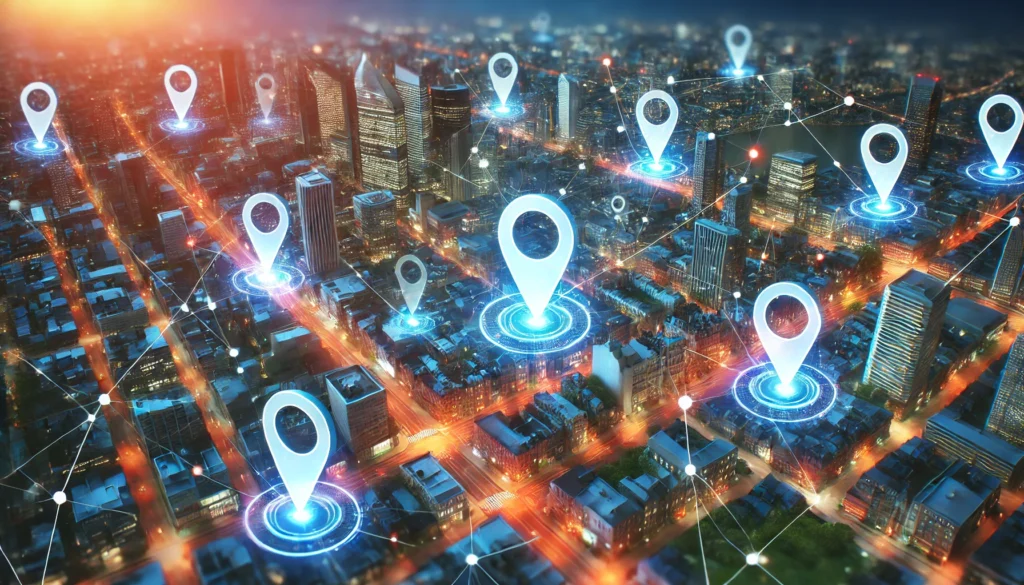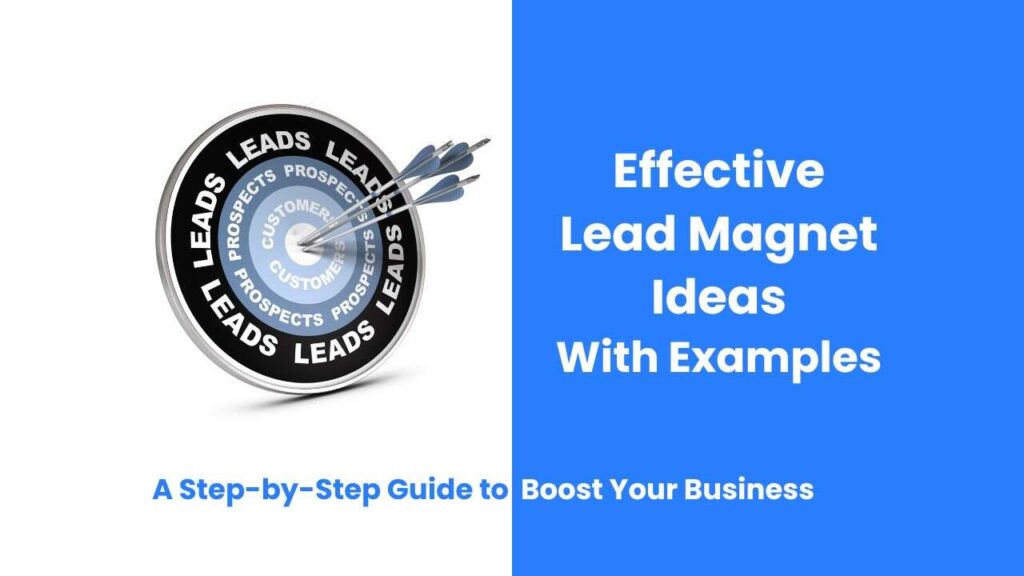In today’s digital world, where ads can feel endless and irrelevant, Geofencing Marketing offers a unique, personalized way to connect with customers when and where they’re most likely to respond. Imagine walking past a favorite coffee shop, and just as you do, a notification pops up on your phone offering a discount on your favorite latte. That’s the power of geofencing—targeting people in real-time based on their exact location. This article will dive into “Geofencing Marketing: How to Reach Customers Right Where They Are” giving you a clear roadmap to use this cutting-edge strategy to attract and engage your ideal customers.

Building strong, lasting connections with your customers is at the heart of effective Geofencing Marketing. By reaching people where they are, this approach not only grabs attention but also shows your commitment to providing convenience and value at just the right moment. This level of personalized interaction creates a sense of trust and loyalty that goes beyond a one-time sale, making customers more inclined to do business with you. Just like in any relationship, the key is to offer meaningful, timely interactions that make clients feel valued—similar to strategies for building long-term relationships. When customers see that your business understands their needs and respects their time, they’re more likely to engage, return, and ultimately become loyal clients.
What is Geofencing Marketing?
Geofencing Marketing is a location-based marketing strategy that creates virtual boundaries around specific areas. By setting up these “geofences,” businesses can trigger ads, messages, or notifications on smartphones and other devices as soon as they enter or exit the designated area. Unlike broad-based advertising, geofencing allows you to reach customers at just the right moment—when they’re nearby and ready to engage.
How Geofencing Marketing Works
Geofencing Marketing works by combining GPS technology, Wi-Fi, RFID (Radio Frequency Identification), and Bluetooth to define the virtual boundary, or “fence.” When someone with a mobile device crosses that boundary, they receive targeted messages instantly. It could be a notification about a sale, an exclusive discount, or an invitation to visit the store.
Why Geofencing Marketing Matters
Traditional advertising relies on hitting as many people as possible, hoping that some of them will show interest. Geofencing Marketing flips that approach, connecting directly with people who are close to your business and thus more likely to act. This hyper-targeted approach is not only more effective but also cost-efficient, as it focuses on high-probability customers rather than casting a wide, potentially wasteful net.
Top Benefits of Geofencing Marketing
1. Timely Engagement
Timing is everything. Unlike ads that may reach people hours after they’ve left an area, geofencing lets you reach out to customers at the perfect moment. If a passerby receives a coupon or exclusive offer for a store they’re standing in front of, there’s a much higher chance they’ll walk in. Think of it as catching someone’s attention when they’re already halfway there.
2. Cost-Effective Marketing
With geofencing, your resources aren’t wasted on mass advertisements that reach uninterested viewers. Instead, you’re targeting people based on their location, increasing the ROI (return on investment) for every campaign. This level of targeting can reduce advertising costs while maximizing impact.
3. Increased Foot Traffic and Sales
Geofencing Marketing: How to Reach Customers Right Where They Are, by its nature, helps drive local customers into your store. When customers are in close proximity, there’s a natural temptation to check out what’s nearby, especially if they’ve just received a personalized notification. This can be particularly effective for retail stores, restaurants, or service businesses aiming to boost walk-in customers.
4. Precise Customer Targeting
Geofencing doesn’t just target people nearby; it can be tuned to reach specific types of customers. Through demographic analysis and audience insights, businesses can tailor their ads to customers most likely to be interested in their offerings. If your audience skews toward young professionals, for example, targeting high-foot-traffic areas near office buildings can deliver better results than random targeting.
Types of Geofencing Techniques
To make the most of Geofencing Marketing, it’s essential to understand the three main techniques used to build geofences:
Centroid Radius Geofencing
This is the most common type of geofence. Here, a radius is drawn around a central point (like your store), creating a circular “fence.” When devices enter this radius, they trigger alerts, notifications, or ads.
Isochrone Geofencing (Drive/Walk Time)
This technique sets the boundary based on the time it takes to reach the business rather than actual distance. For example, if it takes 10 minutes to walk to a location, the geofence only reaches people within a 10-minute walking radius.
Polygonal Geofencing (Building Footprints)
Polygonal geofencing is ultra-precise, setting boundaries around specific areas within a location, like a particular section of a mall. This ensures that ads are sent only to people who enter that designated space.
Step-by-Step Guide to Effective Geofencing Marketing
1. Define Your Geofencing Goals
Before setting up any geofences, it’s crucial to define your goals. Do you want to increase foot traffic? Promote a new product? Target competitor’s customers? Clear objectives help ensure that your geofencing campaigns align with your broader business goals.
2. Choose the Right Locations for Your Geofences
Location choice is essential in Geofencing Marketing. You can target areas around your store, your competitor’s location, or popular attractions nearby. For instance, if your business sells outdoor gear, setting up a geofence around parks or trailheads can reach potential customers more effectively.
3. Set an Appropriate Geofence Radius
While it’s tempting to set a large boundary, sometimes less is more. A smaller geofence radius focuses on people already close to your business, making it more likely that they’ll respond to your ads. Generally, a radius within a five-minute walking distance works well for urban businesses, while suburban areas might do better with a short driving distance radius.
4. Personalize Your Messages
One of the most effective aspects of “Geofencing Marketing: How to Reach Customers Right Where They Are” is the ability to deliver personalized messages. Avoid generic offers and use what you know about your customers’ behavior, preferences, and past interactions. For example, if someone has visited your café before, consider sending them a loyalty reward notification.
5. Choose the Right Time to Trigger Notifications
Timing plays a big role in success. Using mobility data, determine when your target audience is likely nearby and receptive to notifications. If you own a lunch spot, promoting a discount right before lunch hours can be highly effective. Seasonal events and local festivals also offer prime opportunities for time-sensitive geofencing ads.
6. Use a Strong Call-to-Action (CTA)
An enticing CTA can make all the difference in prompting customers to take immediate action. Be clear about what you’re offering and why they should care. Phrasing like, “Get 20% off your next purchase for today only!” is more compelling than a generic “Check out our deals!”
Read article: Actionable Ways to Build Client Relationships That Last
Advanced Strategies for Geofencing Marketing Success
Competitor Targeting
Competitor targeting is a powerful application of geofencing. For example, a fitness center might set up a geofence around a nearby competing gym, sending ads to people entering that gym with special offers on memberships. This “conquesting” strategy aims to attract potential customer’s right when they’re weighing their options.
Event-Based Geofencing
Geofencing around events such as concerts, sports games, or festivals allows businesses to reach audiences when they’re engaged and likely to spend. A nearby restaurant can target event-goers with special promotions to drive traffic after the event ends.
Collaborate with Influencers
Influencers can expand the reach of your geofencing campaign. Partner with influencers who post on social media about your brand’s geofencing offers. This boosts credibility and attracts new followers who may be nearby and ready to act on your promotions.
Monitoring Geofencing Campaign Success
To ensure your Geofencing Marketing campaign performs well, tracking its impact is critical. Here are key metrics to focus on:
- Impressions: The number of times your ads were viewed when someone entered the geofence.
- Reach: The number of unique users who saw the ads.
- Foot Traffic: The number of people who visited your store after seeing the geofencing ad.
- Conversion Rate: The percentage of viewers who took action, such as making a purchase.
- Cost Per Acquisition: The cost-effectiveness of each customer acquisition, calculated by dividing the total campaign cost by the number of conversions.
By reviewing these metrics, you’ll gain valuable insights into what’s working, helping you adjust your strategy to drive even better results.
Challenges and Considerations in Geofencing Marketing
While Geofencing Marketing offers substantial benefits, there are challenges to keep in mind:
Privacy Concerns
Consumers are more conscious of privacy. Always be transparent about how you’re using their data and give them the option to opt out if they wish.
Battery Drain on Mobile Devices
Some geofencing apps can drain users’ battery life, which may lead them to turn off location services. Ensure your geofencing doesn’t drain battery excessively to avoid alienating users.
Over-Saturation of Ads
While it’s tempting to send frequent notifications, too many can turn off potential customers. Maintain a balanced approach and limit the frequency of notifications to avoid appearing spammy.
Conclusion: Geofencing Marketing as a Game-Changer
Geofencing Marketing: How to Reach Customers Right Where They Are, provides a unique edge in today’s competitive market. By leveraging location-based technology, you can reach customers in real time with personalized offers that boost engagement and drive sales. With well-defined geofences, effective CTAs, and a clear understanding of your target audience, geofencing can elevate your marketing strategy to the next level.
Now, with these insights and strategies, your business is ready to harness the power of geofencing marketing and connect with customers like never before. If you haven’t started exploring this innovative tool, there’s no better time to dive in and make every location-based interaction count.



